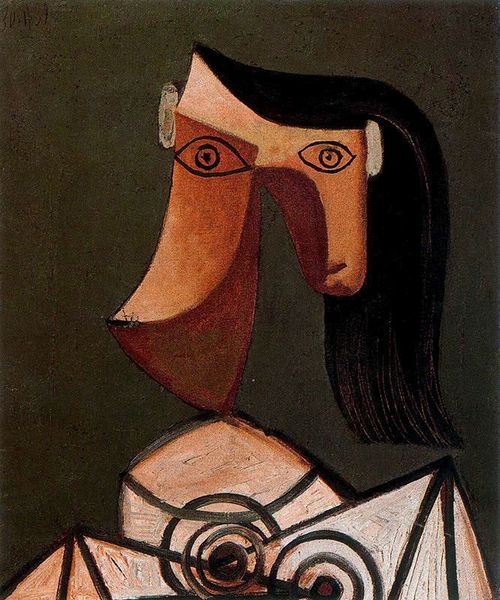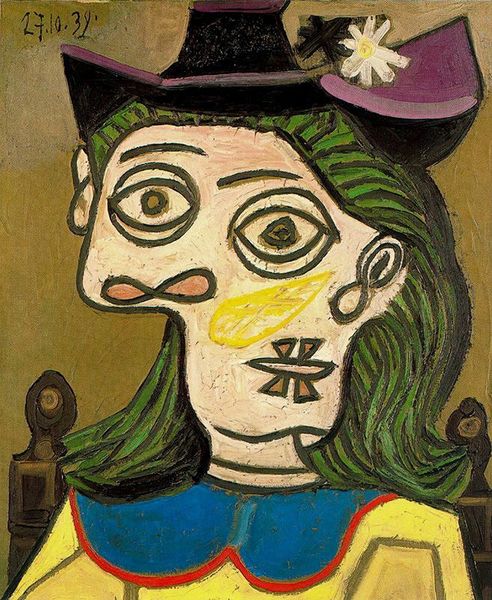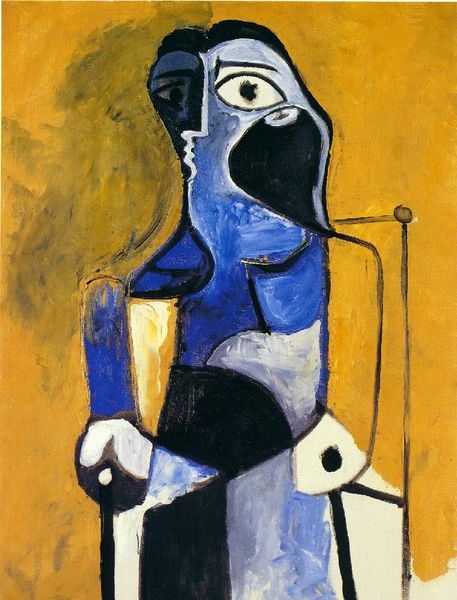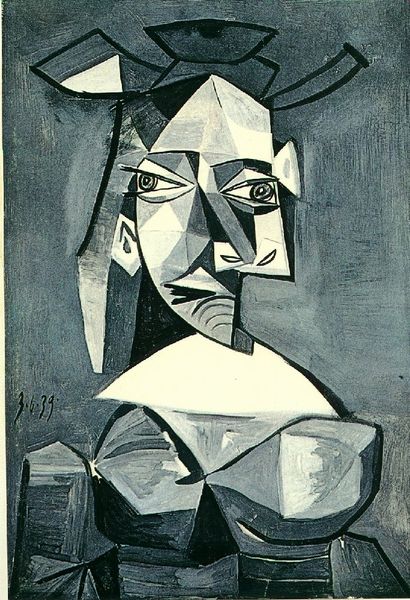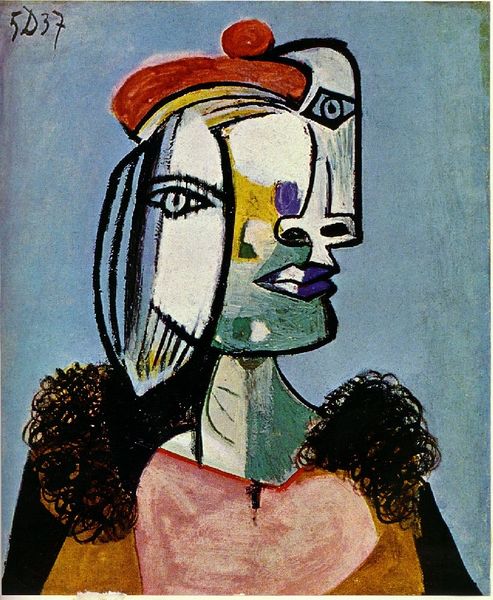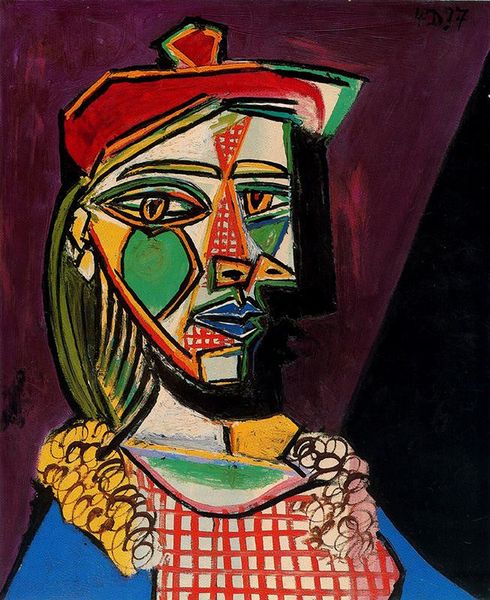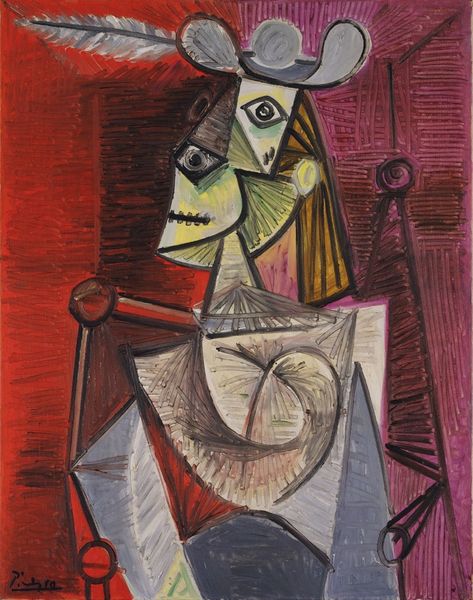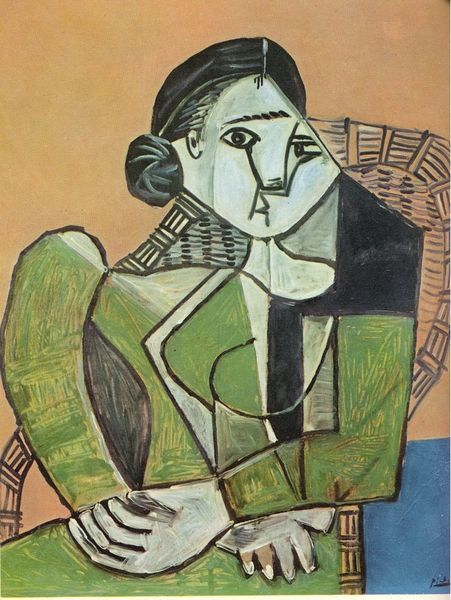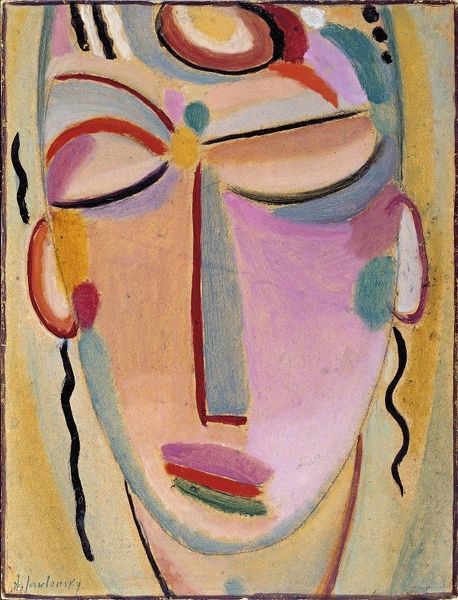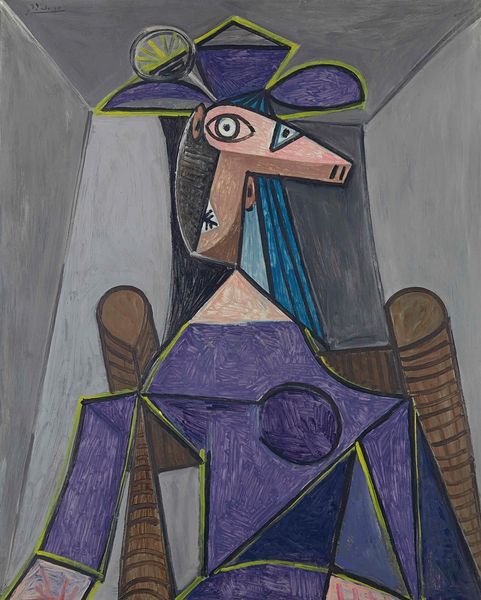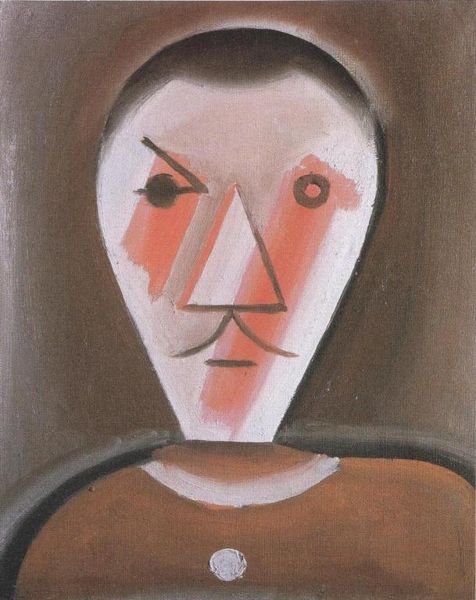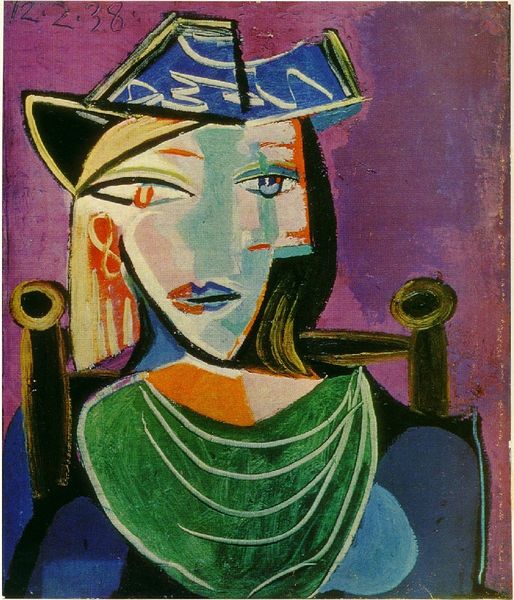
Copyright: Modern Artists: Artvee
Curator: Pablo Picasso’s “Femme au fauteuil,” painted in 1949, certainly offers a striking visual experience. What are your first thoughts? Editor: Startling! Those stark, geometric planes attempting to construct a human likeness… there’s a jarring tension, almost an anxiety, embedded in the distorted form. Curator: The cubist influence is undeniable, fragmenting the subject into multiple viewpoints simultaneously. Notice the interplay of line and form. How the structure conveys the overall composition of the work. Editor: I see how he’s disrupted conventional beauty ideals. Look at those lips – almost a grotesque parody, clustered like…berries? It’s disturbing, yet holds some hidden message, a subversion perhaps. What kind of cultural ideas about women does he try to take down with that portrait? Curator: The fracturing may reflect postwar anxieties or the instability of identity. Color too is a key structural element, defining form and creating spatial tension on the canvas. Editor: The limited palette—rust, grey, ivory—creates a sense of austerity, despite the distortions. Those symbolic "berries" pull you back, giving an off-putting feel. I wonder, could they relate to ideas about motherhood or femininity gone awry in the post-war? Curator: It is an excellent thought. Editor: In conclusion, its formal qualities and use of unsettling symbology give voice to a shared tension. Curator: Through its bold departure from realistic representation, this artwork showcases the formal innovation of cubism alongside an astute sensitivity to contemporary feeling.
Comments
No comments
Be the first to comment and join the conversation on the ultimate creative platform.
